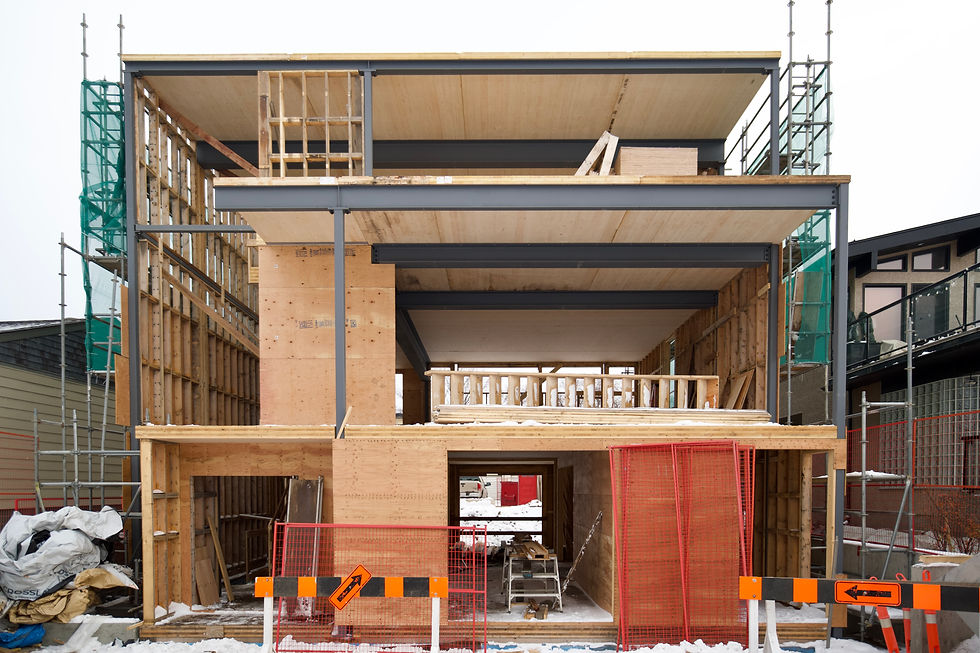Building with Mass Timber: 5 Things I Would Do Differently on the Next Project.
- Shamus Dowler
- Apr 22, 2024
- 3 min read
In the fast-paced and ever-evolving construction industry, each project serves as a classroom. The mass timber projects are particularly intriguing due to their sustainability and aesthetic potential. However, they also come with unique challenges. Reflecting on the last project, I’ve identified five key areas where I’d pivot the approach in future endeavors. Here’s what I’ve learned and how I plan to apply these insights moving forward.
1. Revit Integration Across Teams
Exploration: The integration of Revit software across all teams was a game changer, but there was room for improvement. Complete synchronization from the initial stages ensures that architects, engineers, and construction teams can work from a unified digital model. This not only enhances collaboration but also reduces costly and time-consuming revisions.
Future Strategy: For the next project, the goal will be to enhance training and ensure that every team member is not just familiar with Revit but proficient, allowing us to fully leverage its capabilities from day one.
2. Foundation Approach: Back to Basics
Exploration: Our venture with precast foundations aimed to expedite construction but ended up introducing complexities that overshadowed its benefits. Issues with fit and the need for on-the-fly adjustments led to delays that could have been avoided.
Future Strategy: Moving forward, I’ll return to cast-in-place concrete foundations. This method, while traditional, offers the flexibility needed for the unique demands of mass timber structures, ensuring a perfect fit to the landscape and design specifications.
3. Structural Decisions: Steel vs. Timber
Exploration: We previously experimented with a combination of steel and load bearing, light framed walls for structural support, and mass timber for floors and roofs. This hybrid approach had its merits but also created challenges in integration and construction flow.
Future Strategy: For upcoming projects, we will evaluate the feasibility of using a full mass timber structure, including glulam beams and cross-laminated timber panels, to maximize the environmental and aesthetic benefits while considering structural integrity and cost-effectiveness.

4. Improved Supplier Vetting and Education
Exploration: The quality of materials directly impacts the success of a construction project. Initial lapses in supplier vetting led to inconsistencies in material quality, affecting overall project outcomes.
Future Strategy: Enhanced vetting processes and continuous education for suppliers about our specific requirements for mass timber will be essential. Establishing partnerships with suppliers who are not only reliable but also committed to sustainability will be a priority.
5. Sustainability and Compliance Focus
Exploration: Mass timber is inherently sustainable, but there’s always room to push the envelope in environmental stewardship. We didn't market the project in a way that could be fully optimized for sustainability and compliance as we cut out the certification we had originally planned to pursue.
Future Strategy: The next projects will see a renewed focus on minimizing environmental impact through comprehensive sustainability practices. This includes everything from reducing on-site waste to complying with the most stringent environmental regulations. We aim to not only meet but exceed sustainability standards, setting new benchmarks in the industry. We also plan to market the project for its sustainability even if we don't apply for the certification. Our goal will be to show the exact number of trees being used, and cars being removed from the streets equivalent in carbon capture.

Each mass timber project builds upon the last, with continuous learning and adaptation at the heart of innovation. By openly sharing these lessons, We hope to not only improve our own practices but also encourage a dialogue that could benefit the broader construction community.
What lessons have you learned from your construction projects? How have they shaped your approaches? Share your stories and insights, and let’s build a foundation for innovation together.



Love it! Well done Shamus. Your commitment to building better is to be admired. You should consider becoming a B Corp. Wild + Pine is Edmonton’s newest B Corp and I think they could provide some valueable insights. Happy to make an introduction.